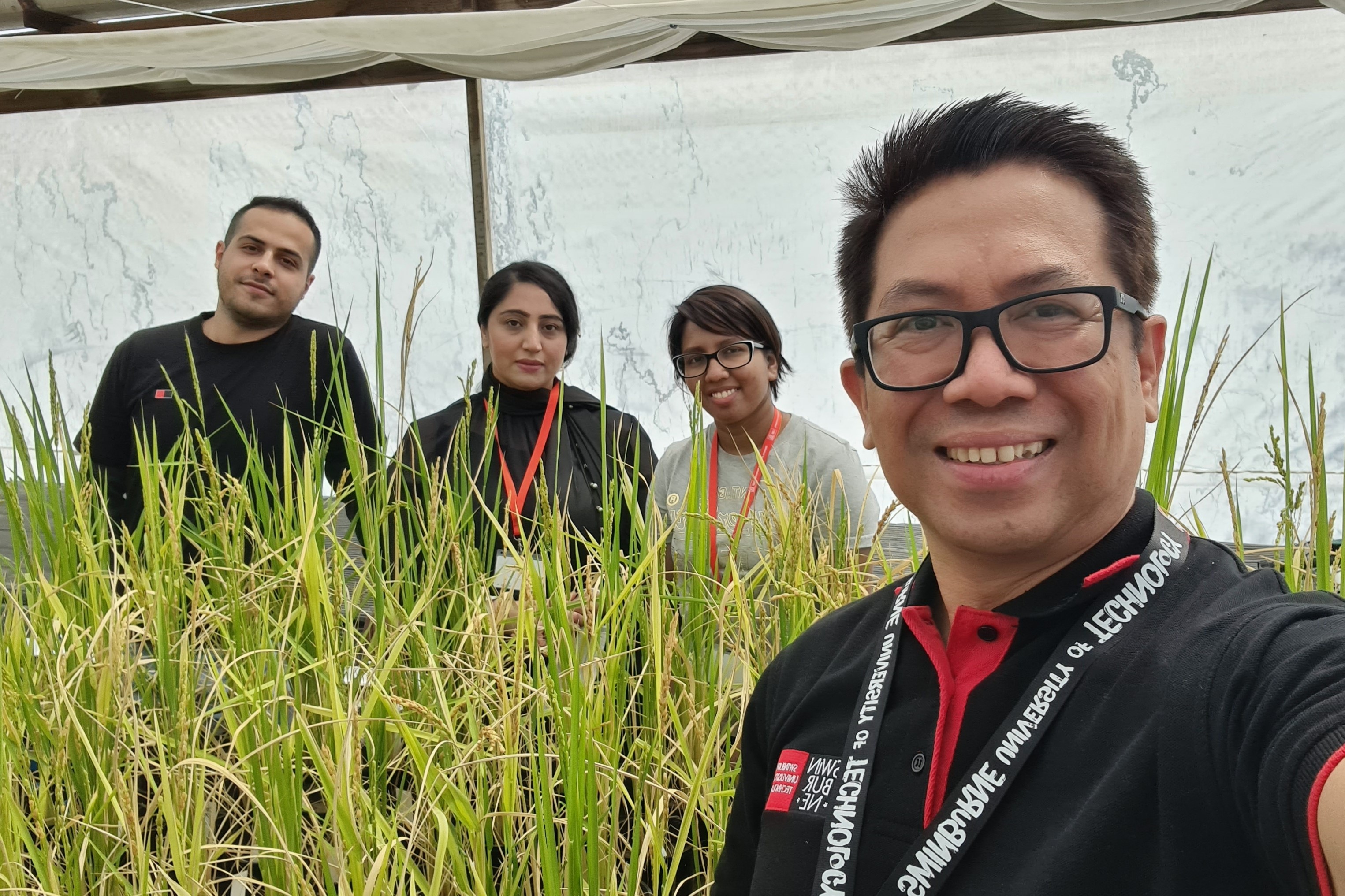Unlocking the secrets of healthier and safer rice

Dr Vito Butardo (pictured far right) is using cutting-edge technology to address global food security and safety with members of his research team, Qurrat Ain, Arash Jamalabadi and Achini Herath (back left to right).
In summary
- Swinburne scientists are using a Canadian synchrotron to examine individual grains of rice, helping identify and produce safer and more nutritious varieties
- A synchrotron accelerates electrons to nearly the speed of light and then focuses them on objects at the intensity of one million suns
- The research can be applied across a range of grains to create more nutritious crops around the world
Swinburne scientists are using a football field-sized synchrotron light facility to examine individual grains of rice to help enhance global food security, nutritional value and the food safety of cereal grains.
By rapidly estimating the nutrient profile of hundreds of varieties of coloured rice, the research will help produce rice that is more nutritious, and lead to more positive health outcomes in the developed and developing world.
Lead researcher Dr Vito Butardo says the findings can be applied across a range of grains – wheat, barley, oats and corn, for example – to create more nutritious crops around the world.
‘Our research can be used immediately by Australian and international manufacturers to help consumers make healthier choices when buying, cooking and eating rice,’ Dr Butardo says.
‘Over time, we can select and breed rice that has a lower glycaemic index (GI), higher concentration of micronutrients – like iron and zinc – and fewer nasties – like lead, mercury or cadmium.’
Utilising radiation of one million suns from across the globe
Dr Butardo and his team are among the first few Australian-based researchers to gain access to the Canadian Light Source, a facility known as a synchrotron, that accelerates electrons in a close loop magnetic field to produce light brighter than a million suns.
This global connection allows Dr Butardo to utilise the power of the synchrotron facility located halfway around the world, which can be remotely controlled in his lab in Melbourne, Australia, to determine the nutritional and safety profile of grains.
Regular biochemical analysis involves turning rice grains into powder and can take hours or days to obtain full results.
Detailed analysis by the synchrotron can take just minutes, allowing Dr Butardo’s team to analyse the nutrient-rich surface of hundreds of grains and help determine the exact location of the health promoting compounds in rice.
This pioneering, non-destructive and high-throughput approach has already yielded results demonstrating the high nutritional value of coloured rices over white rice.
Dr Butardo says the research has broad application across underfed and overfed rice-consuming communities.
‘Understanding coloured grains better will help us create food that is more nutritious for everyone, whether it be ensuring the underfed are getting a good balance of macro- and micronutrients, or helping the overfed boost micronutrient intake, which can be a problem for overweight and obese individuals,’ he says.
The research is conducted in collaboration with Associate Professor Tobias Kretzschmar of Southern Cross University and is supported by AgriFutures Australia and the Australian Research Council, with the International Rice Research Institute providing the varieties of rice for testing.
-
Media Enquiries
Related articles
-

- Technology
- Science
- Engineering
Victorian students drive green energy transition through international hydrogen competition
Swinburne’s KIOSC, in collaboration with Horizon Educational and Gippsland Tech School, co-hosted the Hydrogen Grand Prix in Melbourne.Friday 26 July 2024 -

- Science
Skin, scales and fish tails: using collagen to turn fish guts into gold
New research from Swinburne could transform the sector by converting high value collagen proteins from seafood by-products into cosmetics, food, and pharmaceuticals.
Tuesday 02 July 2024 -

- Science
- Engineering
Submarines in the future could self-identify cracks and self-heal thanks to Swinburne researcher
Thanks to the work of Dr Nisa Salim from Swinburne University of Technology’s School of Engineering, future submarines could self-identify microcracks and self-heal using a new kind of carbon fibre reinforced polymer composites.
Monday 17 June 2024 -

- Science
Inaugural Swinburne-CSIRO Indigenous Research Fellow joins national water quality forecasting project
Swinburne University of Technology has appointed spatial ecologist Associate Professor Sally Waller as its inaugural Swinburne-CSIRO Indigenous Research Fellow...
Thursday 13 June 2024 -

- Social Affairs
- Health
Swinburne leads world-first medical cannabis driving trial
Swinburne researchers are spearheading a world-first trial to evaluate whether patients can drive safely while on prescribed medical cannabis
Tuesday 28 May 2024

